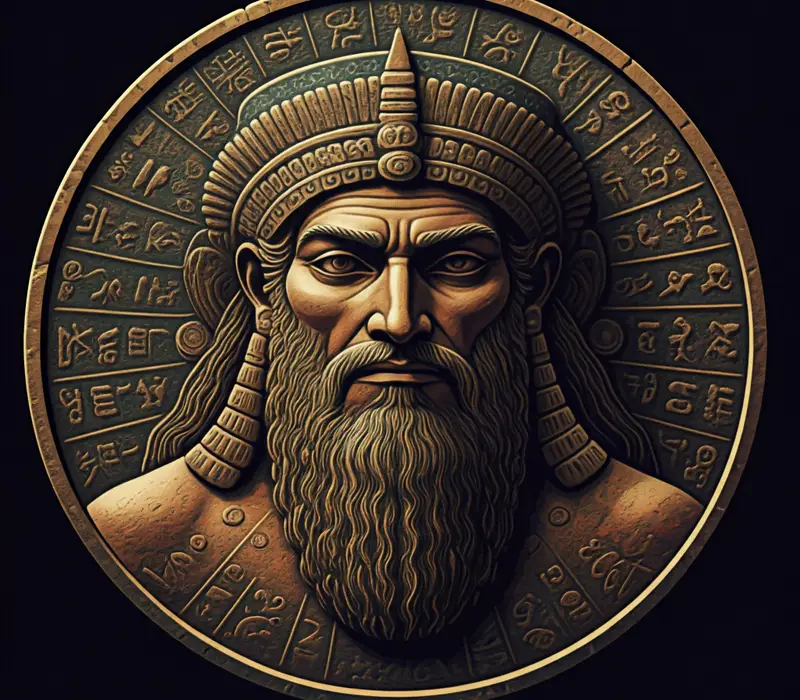The Epic of Gilgamesh: A Timeless Masterpiece of Ancient Iraq

The Oldest Epic in Human History
The Epic of Gilgamesh, often regarded as the world’s oldest literary masterpiece, is a testament to the rich cultural heritage of ancient Mesopotamia, located in modern-day Iraq. Originating around 2100 BCE, this epic tells the story of Gilgamesh, a historical king of Uruk, and his journey of friendship, loss, and the search for immortality. Today, visitors to Iraq can delve into the landscapes and remnants of this ancient civilization, experiencing firsthand the birthplace of this timeless narrative
The Historical Context of the Epic
The Epic of Gilgamesh was composed in Sumerian on clay tablets in cuneiform script. Its story reflects the values, beliefs, and societal structure of early Mesopotamia, the cradle of civilization. This epic combines myth, legend, and history, providing insights into the spiritual and cultural practices of the Sumerians, Akkadians, and Babylonians.
When and Where Was the Epic Written?
The first versions of the epic date back to around 2100 BCE during the Sumerian period.
The most complete version was written during the Neo-Babylonian period (1300–1000 BCE) on 12 clay tablets found in the Library of Ashurbanipal in Nineveh.
Uruk, the city ruled by Gilgamesh, was located in present-day Warka in southern Iraq.
The Role of Scribes
Ancient scribes meticulously preserved the epic over centuries. They used cuneiform to etch the story onto clay tablets, ensuring its survival. Tourists can witness these ancient artifacts in museums, including the Iraq Museum in Baghdad.
The Tale of Gilgamesh: A Summary of the Epic
The Epic of Gilgamesh is divided into several parts, each highlighting pivotal events in the hero’s life:
1. The Tyrant King and the Creation of Enkidu
Gilgamesh, the powerful yet oppressive king of Uruk, becomes the focus of divine intervention. To curb his arrogance, the gods create Enkidu, a wild man who lives among animals. Their eventual friendship is a central theme, showcasing loyalty and camaraderie.
2. The Adventures of Gilgamesh and Enkidu
The duo embarks on daring quests, including slaying Humbaba, the guardian of the Cedar Forest, and defeating the Bull of Heaven sent by the goddess Ishtar. These adventures symbolize the human struggle against nature and the divine.
3. The Death of Enkidu
Enkidu’s tragic death marks a turning point, plunging Gilgamesh into despair and prompting his quest for immortality. This episode highlights the inevitability of death and the value of human connections.
4. The Search for Immortality
Gilgamesh’s journey leads him to Utnapishtim, a survivor of a great flood (paralleling the Biblical Noah). Despite learning the secrets of eternal life, Gilgamesh realizes that true immortality lies in the legacy one leaves behind.
The Legacy of the Epic in Modern Times
The Epic of Gilgamesh remains a source of fascination for scholars, historians, and travelers. Its universal themes—friendship, mortality, and the pursuit of meaning—resonate across cultures and eras.
Impact on Literature and Philosophy
The epic has influenced numerous works, from Homer’s Iliad and Odyssey to modern literature. Its philosophical reflections on life and death remain relevant, drawing comparisons to existentialist thought.
Rediscovery in the 19th Century
In 1853, archaeologists unearthed the clay tablets containing the Epic of Gilgamesh in Nineveh, sparking a renewed interest in Mesopotamian history. This discovery underscored Iraq’s significance as the birthplace of written literature.
Exploring the Land of Gilgamesh: Tourism in Iraq
For those inspired by the epic, Iraq offers a treasure trove of historical sites and experiences:
1. Visit Uruk (Warka)
Explore the ruins of Uruk, where Gilgamesh reigned as king.
Marvel at the remnants of ziggurats and ancient city walls.
2. The Iraq Museum
Located in Baghdad, the museum houses artifacts related to Mesopotamian history, including cuneiform tablets.
3. The Library of Ashurbanipal
While the original library is in ruins, visitors can see its location in Mosul and learn about its historical significance.
4. Marshes of Southern Iraq
These landscapes are reminiscent of the settings described in the epic, providing a serene backdrop for reflection.
Why the Epic of Gilgamesh Matters to Modern Travelers
The Epic of Gilgamesh is not merely a historical artifact; it is a bridge connecting ancient Mesopotamia to modern Iraq. Travelers visiting the sites associated with the epic can immerse themselves in a narrative that has shaped human culture for millennia.
The Epic of Gilgamesh continues to captivate audiences with its timeless themes and vivid storytelling. Through its exploration of human emotions, moral dilemmas, and existential questions, the epic remains a cornerstone of world literature and a compelling reason to explore the rich cultural tapestry of Iraq.